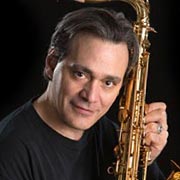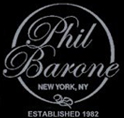Dec 07

Saxophone Sound Development 2 - Secrets to the Ultimate Saxophone Mouthpiece
by Phil Barone
Recently a customer called me and said that he was just about to send his mouthpiece to a popular tech but when I asked him if the tech had asked him what his sound goals were he responded, “no, he didn’t”. Well, than how does the guy know what to do if he doesn’t know what you want? “Well, I told him that I wanted it more open”, he responded. To which I said, “Do you know what opening the mouthpiece will do to the sound?” To which he responded, “No, I don’t”. To which I responded, “Then how do you know that you want it more open?” “Well he said, I just want it to feel more open” Then I said “But do you know what opening the mouthpiece will do to the sound” To which he responded “No”. I said “Then why would you have your mouthpiece worked on?” To which he responded ”I don’t know”.
These are some of the things I’m hoping to help enlighten you with this series because I get these sorts of calls too frequently and more often than not from frantic people that have sent their beloved, “primary” mouthpieces to well intentioned techs who end up making changes to them. Do I need say what a mistake that is? So lesson one, you don’t change your primary mouthpiece because it’s your reference point.
Just because a guy owns a set of files and some sandpaper doesn’t make him a mouthpiece craftsman, or “technician”, as they like to be called these days. But hundreds of people are sending their favorite mouthpiece to people with no credentials other than chatter on a saxophone forum by novice and beginner players who wouldn’t know a bad mouthpiece from a great one. It took me five years just to get good at just refacing mouthpieces, ten to become almost good, twenty to get good, and thirty to be the mouthpiece maker I am today. And I still feel like I have so much more to learn.
In order to be a good mouthpiece craftsman, one must also play, and play reasonably well. That’s a fact, otherwise how can he connect with the mouthpiece or know what to adjust it? He won’t be able to have a relationship with it which is what it’s all about. It’s really no different than a car. A craftsman has to be able to diagnose a problem and fix it and there’s no fixing it without playing it and since you really can’t see anything, you have to be able to derive what to do by listening and feeling to what’s happening then making your adjustment accordingly but since there’s no computers to tell us what’s wrong like with a car, the person doing the work must use his intuition and that takes years and years to develop through trial and error. There are good guys out there, you just have to look for them.
The old school of mouthpiece makers were all focused on the facing of the mouthpiece because when they made a change to it they FELT a difference and noticed a small change in the sound so they were drawn in by it, they became obsessed with it and it became the focus of the mouthpieces and thus the chamber was largely ignored except for two mouthpiece makers, Bobby Dukoff and Arnold Brilhart.
And the new school of technicians continues to frequently ignore the chamber. I imagine it’s been going on for so long that people just don’t seem to get it that the chamber is more important because it’s become normal to do so.
I’m just the opposite, I’m like Dukoff and Brilhart, I focus largely on the chamber but I don’t ignore the facing. I just emphasize the chamber balance the two together. But first I ask the player what it is that they want to achieve, and sometimes that doesn’t involve a mouthpiece. It might involve something else - like practicing - so I tell them that. The most important part of the instrument is the player and we have to work on that first before we can work on your mouthpiece. I’d rather turn a customer’s money down rather than lead them down the wrong path. That’s the difference between a true craftsman, maybe a master and someone else.
I had a stone cold beginner read on Sax on the Web that custom mouthpieces are the thing to have so that’s what he wanted. I flat out refused to make him one and explained explained exactly why. But I’d bet dollars to donuts that he went somewhere else to get one, and I’d bet anything that someone made it for him too. In some situations, more than you can imagine, a mouthpiece is not the answer so I refer them to the Joe Allard tone production exercises here on my blog and you’d be surprised how many people thank me because they work.
In my many years of making and customizing mouthpieces the one thing above all others that stands out is that most players don’t put enough of the mouthpiece in their mouths. I studied with several great teachers but my first great teacher was Herk Faranda and while Herk didn’t teach me specifically to put a lot of the mouthpiece in my mouth, I did watch him and he did take a lot in his mouth and he did teach me to be very loose and relaxed and that turned out to be of tremendous value to me later on in my studies and in my career as a mouthpiece maker. And although I studied with Joe Allard and Victor Morosco later on, it was really Herk that taught me the correct embouchure because later when I went to Joe Allard, I already had the basic embouchure that Joe was teaching.
When we first start to play the sax nobody tells us how much of the mouthpiece to put in our mouth, so I’ll tell you. While looking at your mouthpiece with the reed on, hold it up to the light and you’ll see where the reed meets the mouthpiece on the side rails, that’s called the break. That’s where the reed starts to break away from the side rails and where the curve begins to break away from the rest of the mouthpiece. On tenor mouthpieces it’s just shy of one inch and on alto it’s three quarters of an inch. That’s how far you want your bottom teeth to go in, where the break begins. If you put an inch of the mouthpiece in your mouth on both tenor and alto you allow the reed to vibrate the complete tip opening (width) thus you’ll get the optimum amount of sound from your mouthpiece and since you’re in past the break you won’t be able to close the tip opening off and since now you’re unable to bend the tip opening off you’ll also be able to put more air through the mouthpiece because now you’re no longer closing the tip off whatsoever.
When you don’t use this method, no matter how loose and relaxed you are, just the mere fact that you’re putting your mouth on it means that you’re closing the tip opening at least a little. And on a mouthpiece, even a little is a lot.
At first you’ll notice the sound is pretty rough but this goes away in an hour or two and you’re left with much more volume, more power and a fatter upper register. Try it and see the page on the embouchure exercises to get the full benefit from doing this. The drawback is that you can no longer bend the reed anymore to draw the altissimo notes out, now you have to learn how to manipulate your front throat muscles to get them. This is how masters like Mike Brecker, Ernie watts and Lennie Picket do it and how they can change the notes without changing their fingerings but it takes some practice and it’s a new way of playing. See exercise two in the tone development exercises.
So, what does any of this have to do with understanding your mouthpiece? Technically it has nothing to do with understanding your mouthpiece itself but at the same time the more intimately familiar you become with your mouthpiece and how it works in conjunction with your embouchure and your sax, the better you’ll get to know and understand it and how you can use these skills to your advantage. You’ll learn its attributes and its drawbacks and if at some time you choose to change mouthpieces you’ll know what to look for and once you change mouthpieces you’ll know how to communicate with someone about changing the mouthpiece you play now. But never, ever change your primary mouthpiece, not until you have a new and improved primary and you’ve been playing it a long time, long enough to really call it your main mouthpiece.
Part 3 To Come


